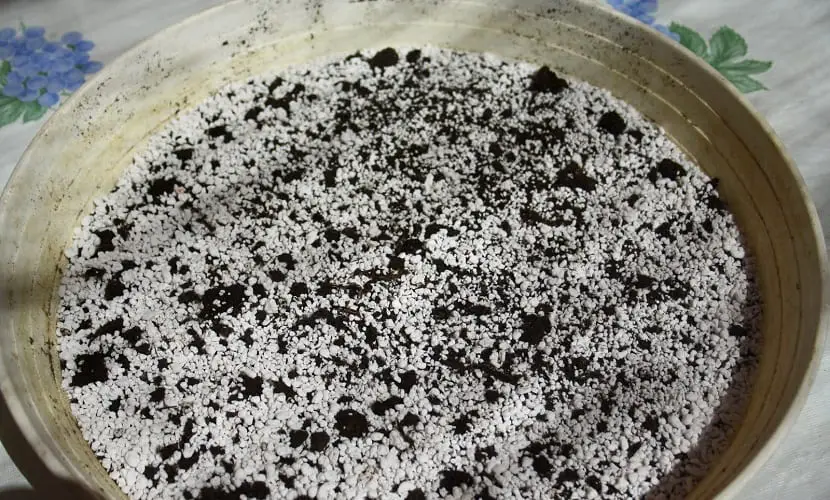

For our garden we use certain materials that help us to germinate our plants or that contribute to their good condition. In this case I come to talk to you about perlite and vermiculite.
Do you want to know what they are, what they are for and when we should use each one?
Pearlite


It is a crystal of natural origin that is quite abundant on the planet. It has a structure that contains 5% water inside and that is why it has the ability to expand when subjected to higher temperatures. When perlite expands due to higher temperatures it acquires a lighter and more porous texture.
In order to acquire perlite, we must measure it in volume, since its weight varies depending on the size of the particles and their moisture content. They are white balls with a high capacity to retain water and at the same time maintain high porosity. In addition, it is extremely consistent and therefore highly resistant to erosion. As the roots grow, they erode the pearlite. However, it is quite sturdy. Mixed with the substrate, it is used to aerate the mixture and give it lightness.
What do we use perlite for? Well, the pelita has various uses in orchards and gardening. For a start, perlite is ideal as a propagation substrate for all types of plants due to its neutrality. It works also in hydroponic crops and can be mixed with growing sand for the propagation of cacti and succulents. It is also used for those plants that spend more time in bags or pots and that must be moved. It is very useful on this occasion since it has great moisture retention capacity, porosity and light weight.
Among the characteristics of perlite we find:
- It is very light, weighing 125 kg per cubic meter.
- It has a neutral pH.
- Free of pests, diseases and weeds.
- Incorporated in substrates it is ideal because it favors good aeration and absorbs large amounts of water.
- It is not flammable.
- Its white color reduces the temperature of the substrate and increases the reflection of light, which is important in greenhouses and shade houses.
Vermiculite


Vermiculite is the generic name given to a mineral that comes from the micas family. It is composed of silicates of aluminum, magnesium and iron. It has properties similar to perlite, since with its laminar structure it can contain some water inside. When the temperature of vermiculite is raised rapidly, This expands and is called exfoliation. When this phenomenon occurs, a product with metallic reflections, brown in color, with low apparent density and high porosity results.
Among its characteristics we find:
- It is very light, weighing between 60 and 140 kilos per cubic meter, depending on granulometry.
- It has a neutral pH (7,2).
- Free of pests, diseases and weeds.
- Incorporated in substrates it favors good aeration and absorbs large amounts of water.
- Its metallic luster increases light reflection, which is important in greenhouses.
We can use vermiculite as a growing substrate to promote the propagation of all types of plants, provided there is good aeration thanks to its high capacity to retain water. It is also used to carry out seed germination tests for their health. It is useful for hydroponic crops like perlite. It is capable of retaining more water than perlite and helps plants retain nutrients and assimilate them well.
Vermiculite can contain potassium, calcium, magnesium, and ammonium necessary for growing plants. It’s light, easy to handle, and mixes well with other ingredients, such as peat, coconut fiber, worm castings, and perlite, for seedlings and potting.
With this you already know which one to choose for your garden according to its water retention and the rest of its characteristics.

